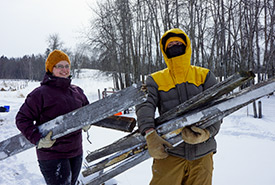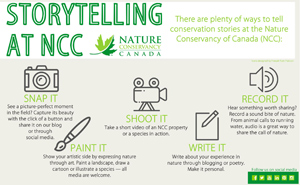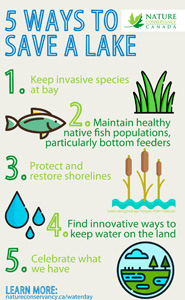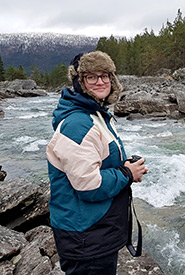Three creative ways to reach people with conservation content

Conservation Volunteers event at Bunchberry Meadows (Photo by NCC)
Nature conservation could not exist without conservationists. To keep this important work going, it is necessary to get as many people involved as possible.
Conservation work can be fun and exciting, but it's also work. So how can we best reach people and strengthen their interest in nature without discouraging them?
Luckily, there are already effective approaches. Here are three of them:
Infographics
Over the last few years, infographics have become a popular format to summarize and simplify complex information.
Besides the entertaining and aesthetic aspects of infographics, they have another important advantage: they can help explain sometimes complex information in an easy-to-understand manner. This is because infographics inform with a well-balanced mix of only a few graphics, numbers and words.
It certainly requires some practice to create infographics, and you need a decent graphics software program. However, if you just want to try it out for the first time, you can use free software programs like Gimp, Inkscape or Scribus.
Whether you want to explain the impact of plastics on certain ecosystems or provide facts about particular habitats and species, infographics can be useful. They can be shared through social media platforms or printed and put up in schools, businesses, community centres or workplaces.
Videos
Many people visit YouTube to watch their favorite musical artists and vloggers. In fact, YouTube is one of the most-used search engines. Like infographics, informative videos help make sometimes complex information more understandable.
Like infographics, videos can also easily be shared on social media channels and are an alternative to the written word. Well-made original video content is enriching and a great format to reach people.
If you want to show how a particular stewardship project had a positive impact on habitat or promote your latest conservation fundraising campaign, why not create a video about it? The Nature Conservancy of Canada (NCC), for example, recently produced a video to promote its largest private conservation fundraising campaign: the Landmark Campaign.
Contests
Last but not least, contests are a great way to reach and engage people. For example, to help connect Canadians with nature and inspire them to help conserve it, NCC offers an annual nation-wide challenge called Small Acts of Conservation. It consists of a checklist of small-scale, individual actions that benefit people and communities along with wildlife and their habitats.
An online gallery maps the locations of people participating in their own small acts of conservation, and people are encouraged to share their acts on social media. Participants are also entered into a draw for a prize pack, providing them with an incentive to participate. Running a contest should not be underestimated; it is a long-term project that takes time, expertise and organization. But don’t be intimidated; the results will likely be worth the effort.




